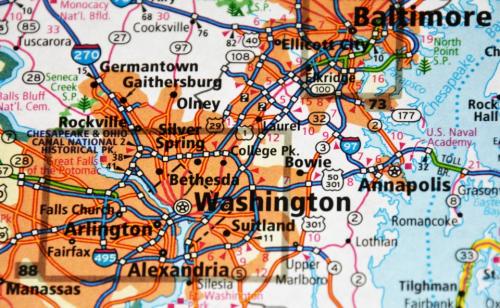The House voted Thursday to pay for planned highway construction by drawing on the Federal Reserve’s capital. The idea of using Fed capital to pay for government spending, which comes up periodically, is a bad one, for several reasons. Although the Federal Reserve is not a private bank and can in fact operate with little or no capital, it’s not good optics or good precedent for Congress to be seen as raiding the supposedly independent central bank to pay for spending. More substantively—and this is what I want to focus on in this post—“paying” for highway spending with Fed capital is not paying for it at all in any economically meaningful sense. Rather, this maneuver is a form of budgetary sleight-of-hand that would count funds that are already designated for the Treasury as “new” revenue.
To see why, first note that the Fed, as a side effect of its other activities, is already a major source of revenue for the federal government. The Fed earns interest on its portfolio of securities. This income, less the Fed’s operating expenses and interest paid on Fed liabilities, is sent to the Treasury on a pretty much continuous basis. These remittances are large: Over the past half dozen years the Fed has sent nearly half a trillion dollars to the Treasury, funds which directly reduce the government’s budget deficit. (See here for the press release on last year’s payment. It’s true that the ultimate source of the Fed’s income is interest payments from the Treasury; but if the Fed didn’t own the bonds, those interest payments would go to investors who would not return the proceeds to the government.) The Fed’s capital account provides a buffer that absorbs any losses on the Fed’s portfolio and allows the payments to the Treasury to be smoothed over time.
Unlike the Fed’s remittances, which are real resources whose availability reduces the burden on the taxpayer, drawing down the Fed’s capital provides no net new funding for the government. Here are two (equivalent) ways to see why:
- As noted, the Fed’s capital allows for some smoothing over time in its remittances. But, while the time pattern of those payments may be adjusted, on the margin every dollar the Fed earns is ultimately sent to the Treasury. Drawing on the Fed’s capital creates no new government revenue on net, since the revenue the Treasury “gains” by this action would be exactly offset by reduced remittances from the Fed in the future. Consequently, rather than being truly paid for, the additional highway spending would be reflected dollar for dollar in increased current and future budget deficits.
- Alternatively, consider what would actually happen if the Congress required the Fed to reduce its capital. To comply, the Fed would sell some of the government debt that it owns and send the proceeds from the sale to the Treasury. (That money is what Congress proposes to count as funding for highway construction.) But while the Treasury would receive some money up front, the Fed would also have to reduce its future payments to the Treasury by the amount of interest foregone on the securities it sold. The net effect of this on the Treasury’s cash flows—receipt of a lump sum today, but reduction in future revenues equal to the interest payments on that lump sum—is precisely the same as that resulting from the issuance of fresh government debt. Again, drawing on the Fed’s capital provides no new resources and amounts to “paying” for the spending by issuing new government debt.
The nonpartisan Government Accountability Office, the government agency that does research for Congress on all sorts of topics, agrees with this analysis. In a 2002 report on the subject of the Fed’s capital, it noted (p. 16) that, while a Fed “transfer to Treasury is recorded as a receipt to the government, such transfers do not produce new resources for the federal government as a whole.” It cited similar conclusions by the Congressional Budget Office.
Legislators who care about the integrity of the budgeting process should not support this budgetary sleight-of-hand.
Comments are now closed for this post.
The Brookings Institution is committed to quality, independence, and impact.
We are supported by a diverse array of funders. In line with our values and policies, each Brookings publication represents the sole views of its author(s).




Commentary
Budgetary sleight-of-hand
November 9, 2015